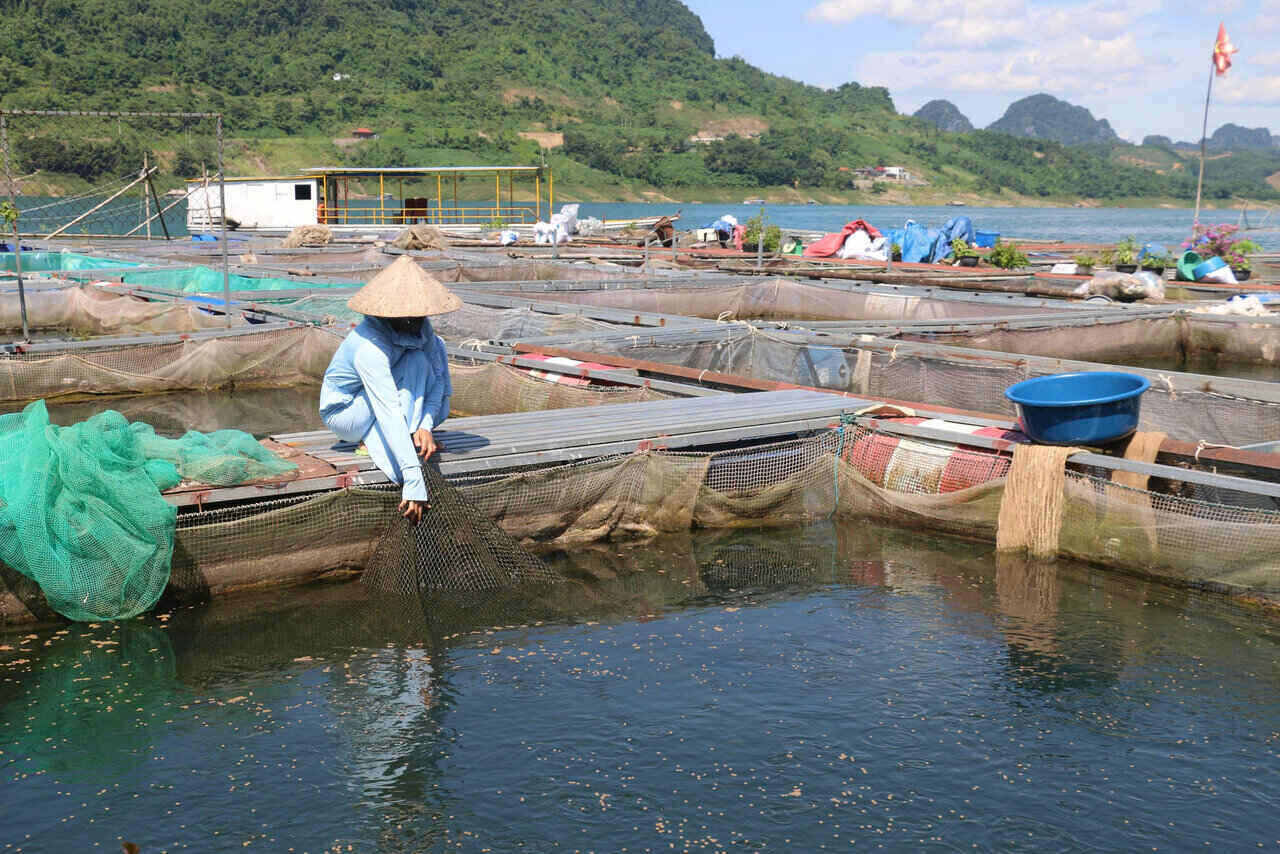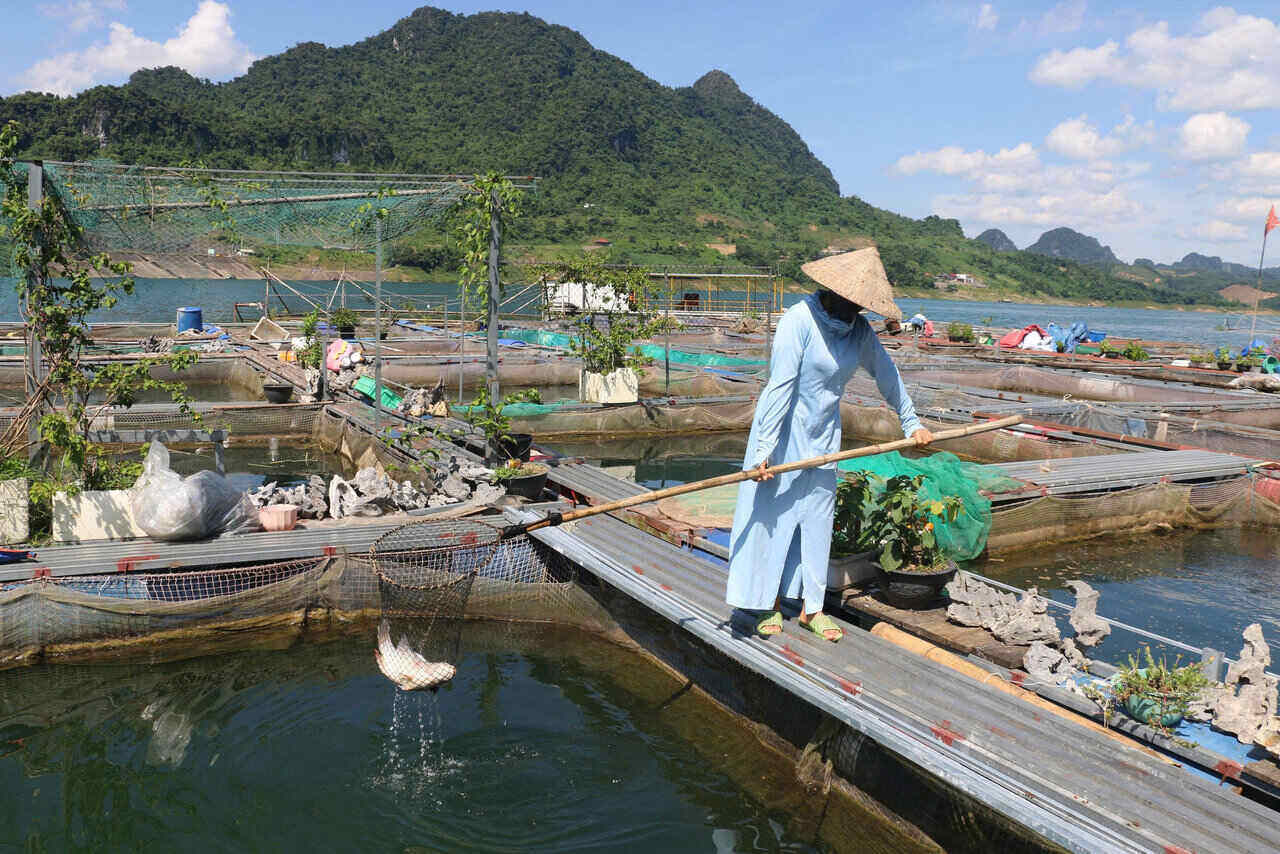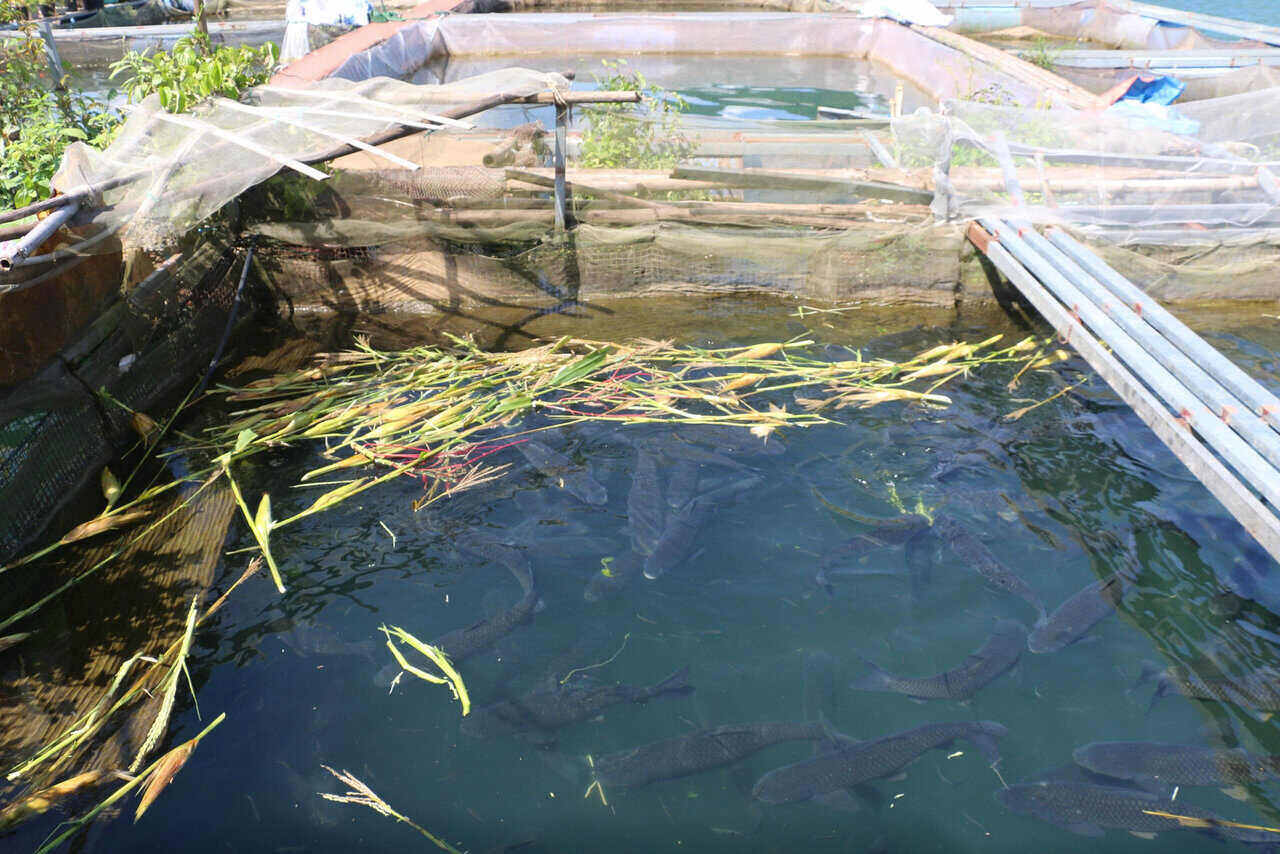According to the reporter's records in early September, along the Hoa Binh lake, thousands of fish cages were still regularly cared for by the people. Cage fish farming has become the main livelihood, bringing an important source of income to many households.
However, recently, people have struggled to worry about output when consumption has decreased significantly.

In Lau Bai hamlet, Tien Phong commune, more than 60 fish cages are still attached to the lake. Mr. Ly Quang Hoang (a household that has only invested in 5 cages since the beginning of the year) said: "The tourists rarely come to buy, the price of fish fluctuates. Sometimes catfish is sold for 120,000 VND/kg, but sometimes it is only 70,000 - 80,000 VND. Investing in large sums of capital but having unstable output, we are very worried".
Mr. Hoang also expressed his hope that the government will soon connect with large consumption establishments or organize fish selling points right at the wharf, combined with experiential tourism so that customers can come to the raft to eat and buy, so that people can reduce their worries about having to sell cheap products.
Mr. Hoang's story is also a common concern in many other neighborhoods. Mr. Bui Van Hoi (48 years old, Muong Hoa commune) currently has 35 fish cages, each cage worth over 20 million VND, bringing an average income of over 100 million VND/year. However, since the beginning of this year, the consumption situation has been unstable. The family only retails and has not found a stable source of income.

"Every month, we spend about 20 million VND on fish cakes, but the fish cannot be sold yet. Many days I have to buy food willingly, while the money earned is only a few hundred thousand dong from small-scale sales. Currently, my family still has a few tons of unconsumed catfish," Mr. Hoi shared.
According to Mr. Hoi, if there is more preferential loans to maintain care during the difficult period, farmers will feel secure in staying longer.
Some households believe that the reason for slow consumption is due to the shrinking traditional market, competition from fish sources elsewhere, while trade connectivity activities are not strong.

Talking to reporters, Mr. Ngo Ngoc My - Chairman of Muong Hoa Commune People's Committee, said: "The whole commune currently has 656 fish cages, distributed in 6/15 hamlets, becoming the main livelihood of hundreds of households. To support people, the commune is focusing on promoting aquaculture development policies associated with community tourism".
According to Mr. My, visitors can visit and experience cage fish farming, combined with enjoying lake fish specialties right on rafts, thereby opening up a more sustainable consumption direction. At the same time, the government also coordinated with trade promotion units to connect and expand the market for the product.
The profession of raising fish in Hoa Binh Lake is the source of life for many households, but sustainable development requires more market support, brand building and linking with businesses. Only when there is a stable output can farmers feel secure in sticking with the long-term, turning the potential of the pond into a real advantage.










